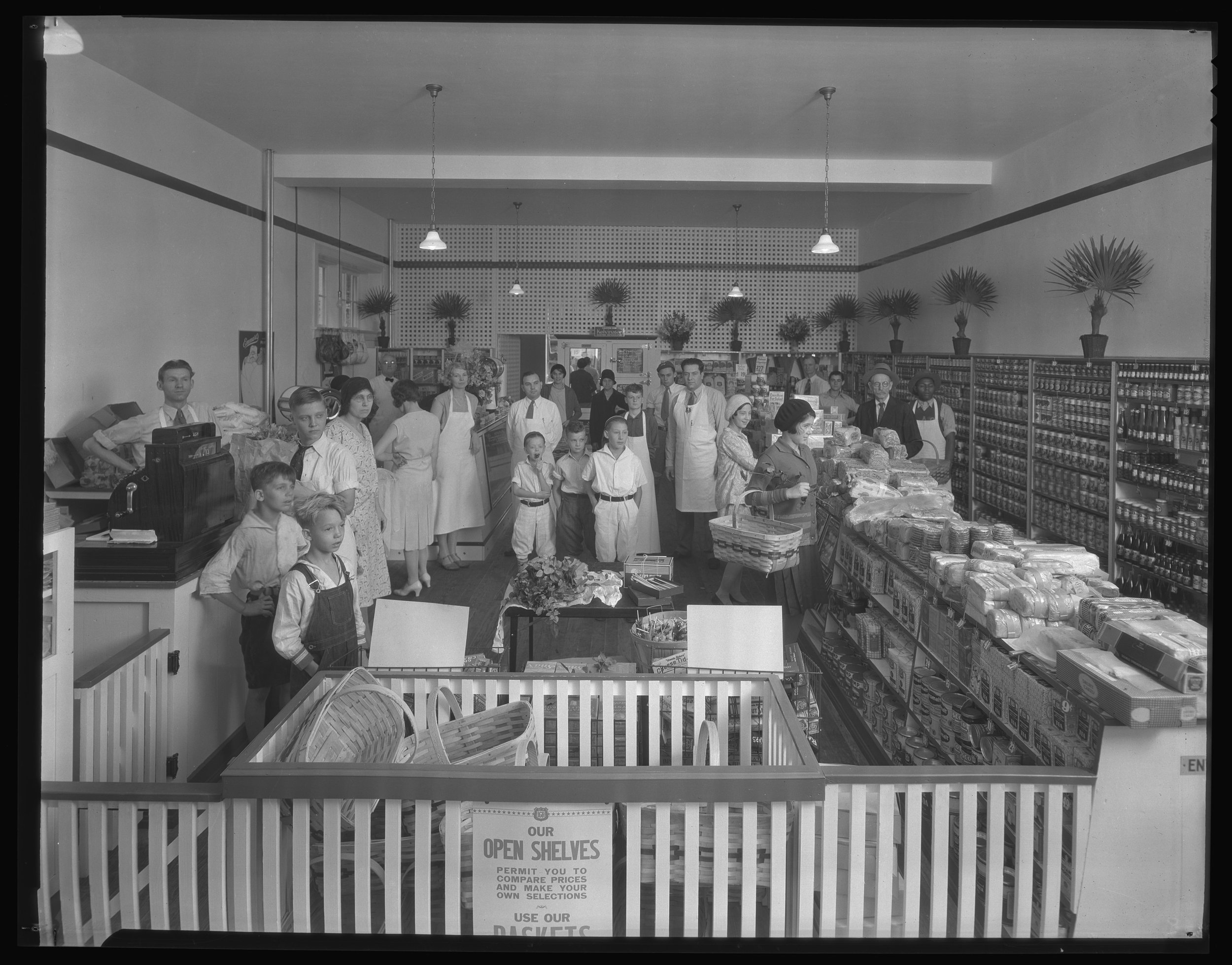Today we take self-service for granted as how “shopping” works, but in the early twentieth century self-service was a weird and unfamiliar way to do your shopping. The most successful chain stores of the day arranged their stores for efficient clerk service. Before 1940 Piggly Wiggly was the only self-service chain with a national network of stores.
My book, Beyond Piggly Wiggly, reveals the importance of Piggly Wiggly in the invention of self-service retailing and goes beyond the history of a single firm to explore the role of small business entrepreneurs who invented the first self-service stores. This website introduces some of the themes and sources you will encounter in my book, including store patents and photographs of self-service store interiors.
It is tempting to look for the origins of supermarkets in large stores, but self- service shopping was invented in small store spaces. . .
from the Outside Wood’s Grocerteria looked like any other grocery store…..

but on the inside it was revolutionary

Wood’s Grocerteria photographs, September 20, 1930. Lafayette Studios Photographs, Audio-Visual Archives, University of Kentucky Archives, Lexington.
What was so revolutionary about Wood’s Grocerteria?
Photographs offer important evidence of the origins of self-service store design. In this photograph of Wood’s Grocerteria, notice that the selling floor was fenced off. The only way into the store was through an entrance gate to the right in the photograph. Once customers entered the retail space, Wood arranged the store fixtures to create a long shopping aisle. Customers had to walk all the way to the back of the store selecting their own merchandise from open shelves. Price tags hanging from the shelves alerted them to item prices. Wood kept the height of the shelving low in the center of the room so that there was a clear view of customers serving themselves. He didn’t fill the whole store with shelves because he needed open space for customers to gather at the butcher counter in the back left corner. It was not possible to sell fresh meat using self service methods until after World War II. The last stop on the shoppers’ pathway was the cash register where they paid for merchandise before exiting the enclosed space through a swinging gate. Wood’s store arrangement was designed to automate retailing work that was typically done by store clerks.

